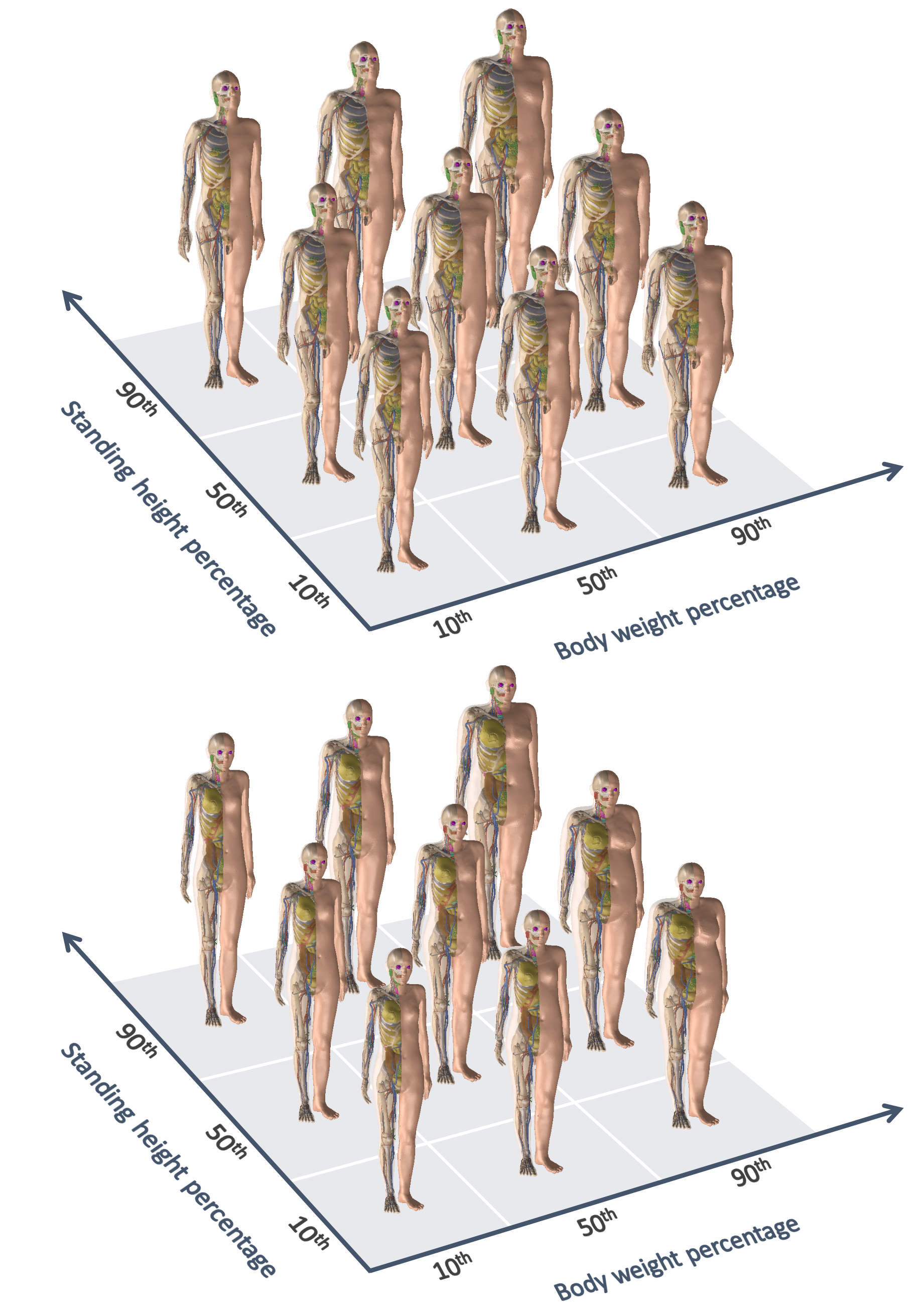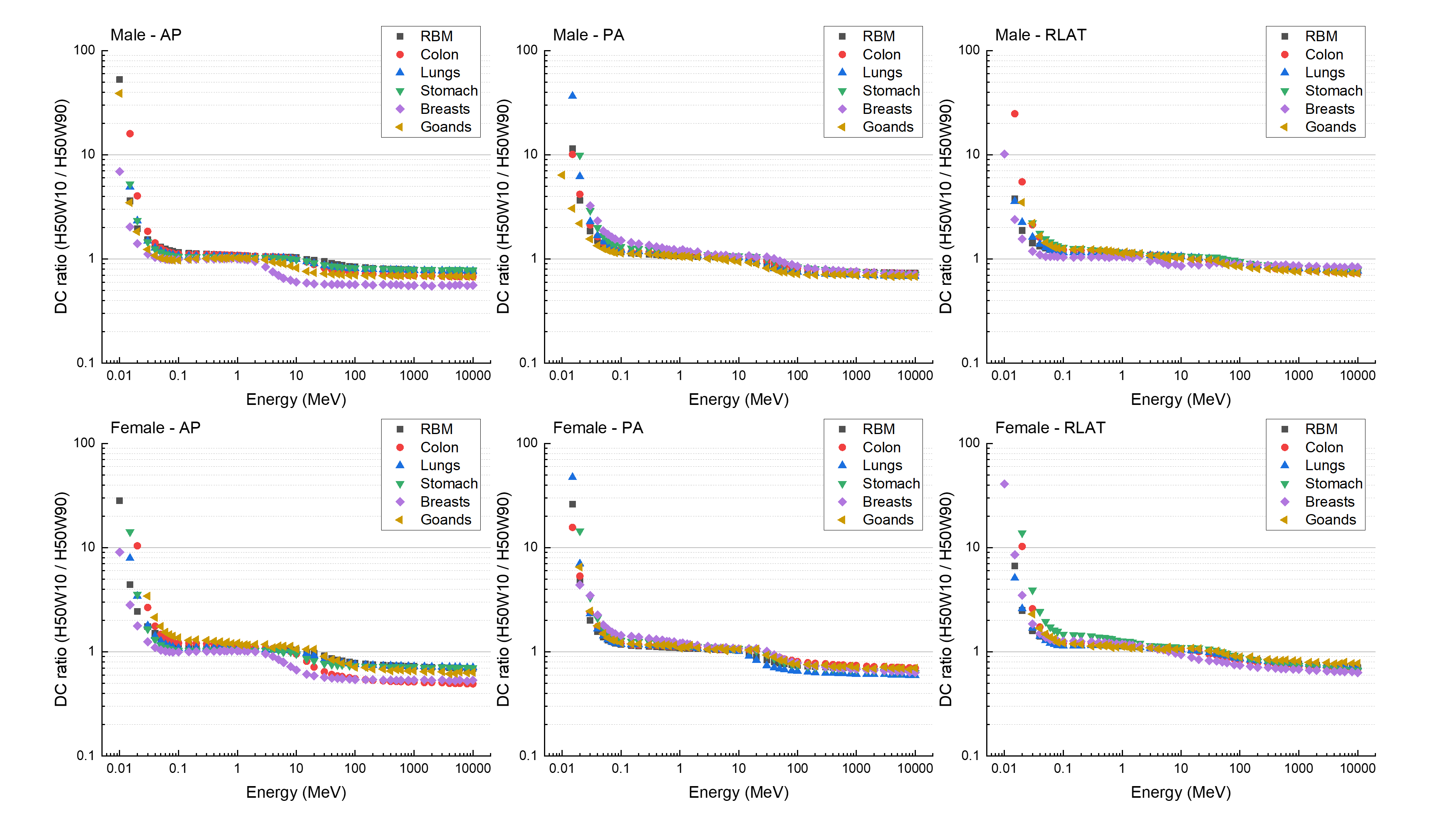글로벌 연구동향
방사선방호 및 안전
- [Radiat Environ Biophys.] Dose coefficients of percentile-specific computational phantoms for photon external exposures.광자 외부피폭에 대한 백분위수별 전산팬텀의 선량계수
한양대 / 염연수, 김찬형*
- 출처
- Radiat Environ Biophys.
- 등재일
- 2020 Mar
- 저널이슈번호
- 59(1):151-160. doi: 10.1007/s00411-019-00818-w. Epub 2019 Nov 2.
- 내용
Abstract
The use of dose coefficients (DCs) based on the reference phantoms recommended by the International Commission on Radiological Protection (ICRP) with a fixed body size may produce errors to the estimated organ/tissue doses to be used, for example, for epidemiologic studies depending on the body size of cohort members. A set of percentile-specific computational phantoms that represent 10th, 50th, and 90th percentile standing heights and body masses in adult male and female Caucasian populations were recently developed by modifying the mesh-type ICRP reference computational phantoms (MRCPs). In the present study, these percentile-specific phantoms were used to calculate a comprehensive dataset of body-size-dependent DCs for photon external exposures by performing Monte Carlo dose calculations with the Geant4 code. The dataset includes the DCs of absorbed doses for 29 individual organs/tissues from 0.01 to 104 MeV photon energy, in the antero-posterior, postero-anterior, right lateral, left lateral, rotational, and isotropic geometries. The body-size-dependent DCs were compared with the DCs of the MRCPs in the reference body size, showing that the DCs of the MRCPs are generally similar to those of the 50th percentile standing height and body mass phantoms over the entire photon energy region except for low energies (≤ 0.03 MeV); the differences are mostly less than 10%. In contrast, there are significant differences in the DCs between the MRCPs and the 10th and 90th percentile standing height and body mass phantoms (i.e., H10M10 and H90M90). At energies of less than about 10 MeV, the MRCPs tended to under- and over-estimate the organ/tissue doses of the H10M10 and H90M90 phantoms, respectively. This tendency was revised at higher energies. The DCs of the percentile-specific phantoms were also compared with the previously published values of another phantom sets with similar body sizes, showing significant differences particularly at energies below about 0.1 MeV, which is mainly due to the different locations and depths of organs/tissues between the different phantom libraries. The DCs established in the present study should be useful to improve the dosimetric accuracy in the reconstructions of organ/tissue doses for individuals in risk assessment for epidemiologic investigations taking body sizes into account.
그림 1. 체형별 성인남녀 인체전산팬텀

그림 2. 키 백분위 50에서 몸무게 백분위 90에 대한 몸무게 백분위 10의 선량계수 비율
Author informationYeom YS1, Han H2, Choi C2, Shin B2, Kim CH3, Lee C1.
1
Division of Cancer Epidemiology and Genetics, National Cancer Institute, National Institutes of Health, Rockville, MD, 20850, USA.
2
Department of Nuclear Engineering, Hanyang University, 222 Wangsimni-ro, Seongdong-gu, Seoul, 04763, Korea.
3
Department of Nuclear Engineering, Hanyang University, 222 Wangsimni-ro, Seongdong-gu, Seoul, 04763, Korea. chkim@hanyang.ac.kr.
- 키워드
- Body size; Computational phantom; Dose coefficient; Monte Carlo; Photon
- 연구소개
- 본 연구는 몬테칼로 전산모사를 수행하여 광자장에 대한 다양한 체형에 따른 외부피폭선량계수를 산출하고, 산출된 데이터를 체계적으로 분석하여 체형이 선량계수에 미치는 영향을 상세히 보여주었다. 선량계수 산출을 위해 서양인 성인남녀 각각 10, 50, 90 백분위 키, 몸무게 조합으로 이루어진 총 18개의 인체전산팬텀들을 이용하였으며, 사용된 체형별 팬텀들은 국제방사선방호위원회(ICRP)의 차세대 메시형 성인남녀 표준팬텀을 기반으로 제작된 최신 모델이다. 현재 가장 널리 사용되는 ICRP 선량계수는 표준 체형에만 국한되어 있음을 고려할 때, 많은 연구자들이 피폭자 체형을 고려하여 보다 정확한 선량평가를 위해 본 연구의 체형별 선량계수를 매우 유용하게 사용할 것으로 기대된다.
- 덧글달기
- 이전글 [J Radiol Prot.] Assessment of working environment and personal dosimeter-wearing compliance of industrial radiographers based on chromosome aberration frequencies.
- 다음글 [Appl Radiat Isot.] Radioisotope identification using an energy-weighted algorithm with a proof-of-principle radiation portal monitor based on plastic scintillators.









